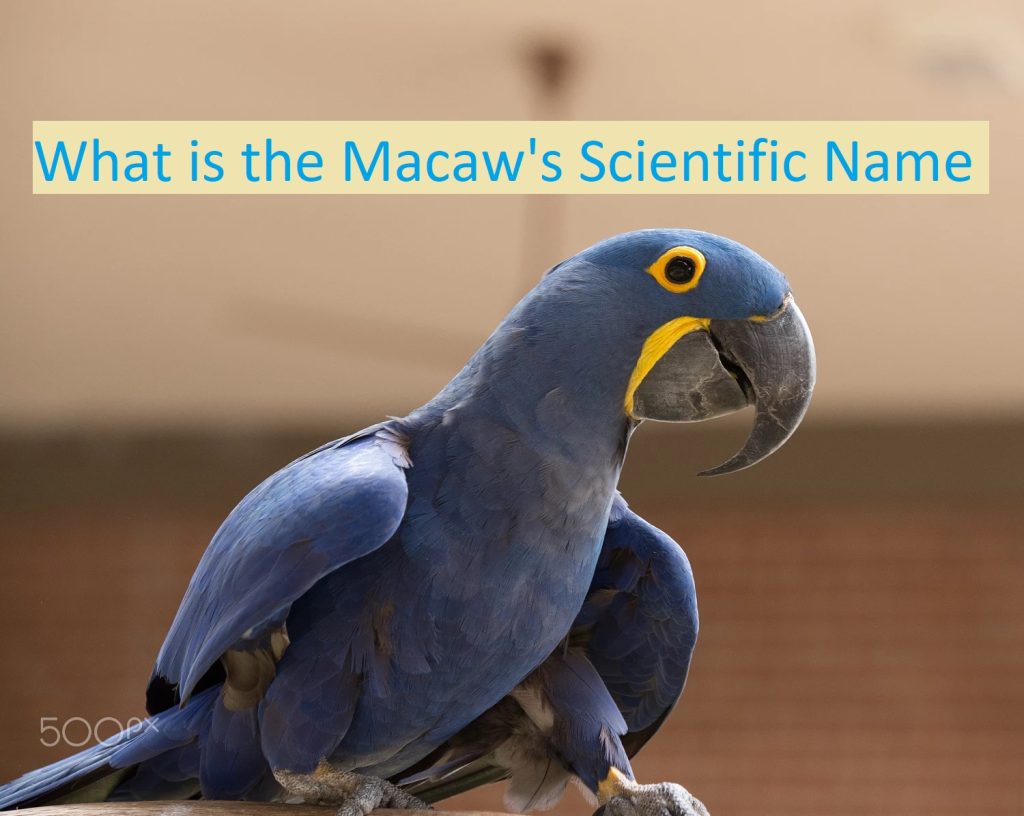What is the Macaw’s Scientific Name?

Macaws are king-sized members of the parrot family. They are highly intelligent, mate for life and can live up to 60 years in the wild. In the wild, they eat a variety of fruits, seeds, nuts, leaves, flowers and sources of protein like snails and insects. They also visit river banks to lick clay soil, which is thought to neutralize the toxins they consume in their diet.
Ara
The scarlet macaw is the best-known of the parrots and can be seen in captivity all over the world. However in the wild they are a rare sight, with their populations declining due to habitat loss. They are also very vulnerable to illegal capture for the pet trade and hunting.
They are a large striking bird with long tails and long narrow wings, all brightly colored. Males and females look very similar. They are easy to identify with their distinctive bare face patch that varies in size and pattern depending on species.
Like other parrots macaws feed on seeds, nuts and fruits. Their powerful beaks can easily crack open hard-shelled foods. They supplement their diet with fruit and insects. Like many other birds, they may consume clay to help neutralize toxins in their food. They emit high and low-pitched squawks, screams and squeaks designed to carry over great distances in search of mates or groups to forage with.

Arini
Macaws are opportunistic eaters and consume both plant and animal products. In the wild, they feed on fruits, leaves, flowers, nuts and palm tree fruit. They also eat insects and other animals such as snails, snakes and jaguars. Macaws are highly intelligent and social birds that like to explore. They tend to be noisy and raucous. They are known to lunge at people, which is why they need to be handled carefully and only by seasoned bird owners.
Depending on the species, a macaw will achieve sexual maturity between two and ten years of age. They usually mate for life. In the wild, they live in flocks of 30 to 40 birds or more. Flocks are used to protect against bigger birds, snakes and other predators. Flock mates help each other by guarding eggs, babies and food sources. They also act as a form of communication, letting other members know they are approaching. They will also warn other flocks of potential threats such as jaguars or people that may be trying to steal their food or nest.

Blue and Yellow Macaw
Blue-and-yellow macaws can be very tame and make great pets. They are very intelligent and can learn to talk, whistle, and even mimic human voices. They can also use head bobbing, cocking their heads, blushing, prancing, shaking their tail feathers and waving their wings as ways to communicate.
Like other macaws, these birds are gregarious in the wild and often pair for life. They are able to form large flocks and their bonded pairs fly close together, with their wings almost touching. They have a dark grey-black hooked beak and zygodactyl feet (they have 2 toes that point forward and two toes that point backward).
They live in the lowland rainforests and savannas of Bolivia, eastern Panama and Brazil. They are primarily seen in pairs and can gather in small groups at fruiting trees or clay licks. They nest in cavities high in the canopy. They are monogamous and lay one egg per year. Males and females look similar, so DNA or feather sexing is needed to determine the sex of a bird.

Great Green Macaw
The great green macaw (Ara ambiguus) is the second largest of all macaws and is covered in bright green feathers. It is found in tropical forests from the Atlantic wet lowlands of Central America to Western Ecuador. It primarily inhabits forest above 600 meters in elevation. Until recently, much about the ecology of this species was unknown. However, a seven-year study conducted by George Powell and his team revealed a lot about their behavior including habitat use, diet and nesting habits.
It can be confused with the Military Macaw and a few other species where their ranges overlap, but it can be distinguished by its darker wash across its body and tail feathers as well as by the more pronounced red line on the face and bare skin area. This bird can say around 15 words and utters loud raucous squawks and growling “rawks”. It is threatened by loss of its natural habitat as well as being hunted for the illegal pet trade.





